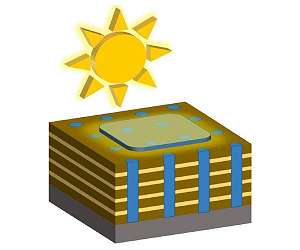Utilization of renewable solar energy is crucial for addressing the global energy and environmental concerns and achieving sustainable development in our society. In this regard, photocatalytic water splitting has attracted significant interest as a cost-effective means to convert sustainable solar energy into valuable chemicals.
However, efficiency is sensitive to reaction conditions and experimental setup, it is difficult to compare the results obtained by different research groups or provide a reliable guide for large-scale implementation. Due to the lack of testing standards, it is difficult to compare the results obtained by different research groups or provide a reliable guide for large-scale implementation.
Recently, a research team led by Prof. LI Can and Prof. LI Rengui from the Dalian Institute of Chemical Physics (DICP) of the Chinese Academy of Sciences (CAS), in collaboration with Prof. Kazunari Domen from The University of Tokyo, Prof. Lianzhou Wang from The University of Queensland, Prof. Kazuhiro Sayama from the National Institution of Advanced Industrial Science and Technology, and Prof. Gang Liu from the Institute of Metal Research, CAS, initiated the establishment of international efficiency accreditation and testing protocols for particulate photocatalysts toward solar fuel production.
Their perspective, published in Joule, was expected to serve as a useful guide for developing a well-recognized testing standard and for further promoting research advances in the field of photocatalytic solar energy conversion.
The researchers discussed the protocols for the reliable determination of the efficiency of the overall photocatalytic water splitting reaction based on particulate photocatalysts.
They also proposed to establish accreditation research laboratories for efficiency certification toward the launch of a figure of merit – a “Best research photocatalyst efficiencies” chart.
This initiative would provide an important platform for establishing standard testing protocols for photocatalytic water splitting and for improving the solar-to-hydrogen conversion efficiency in practical applications.
Related Links
Dalian Institute Of Chemical Physics, Chinese Academy Sciences
All About Solar Energy at SolarDaily.com
|
We need your help. The SpaceDaily news network continues to grow but revenues have never been harder to maintain. With the rise of Ad Blockers, and Facebook – our traditional revenue sources via quality network advertising continues to decline. And unlike so many other news sites, we don’t have a paywall – with those annoying usernames and passwords. Our news coverage takes time and effort to publish 365 days a year. If you find our news sites informative and useful then please consider becoming a regular supporter or for now make a one off contribution. |
||
|
SpaceDaily Contributor $5 Billed Once credit card or paypal |
SpaceDaily Monthly Supporter $5 Billed Monthly paypal only |
|

![]()
Tiny 3D structures enhance solar cell efficiency
Halle, Germany (SPX) Feb 04, 2021
A new method for constructing special solar cells could significantly increase their efficiency. Not only are the cells made up of thin layers, they also consist of specifically arranged nanoblocks. This has been shown in a new study by an international research team led by the Martin Luther University Halle-Wittenberg (MLU), which was published in the scientific journal Nano Letters.
Commercially available solar cells are mostly made of silicon. “Based on the properties of silicon it’s not feasib … read more
